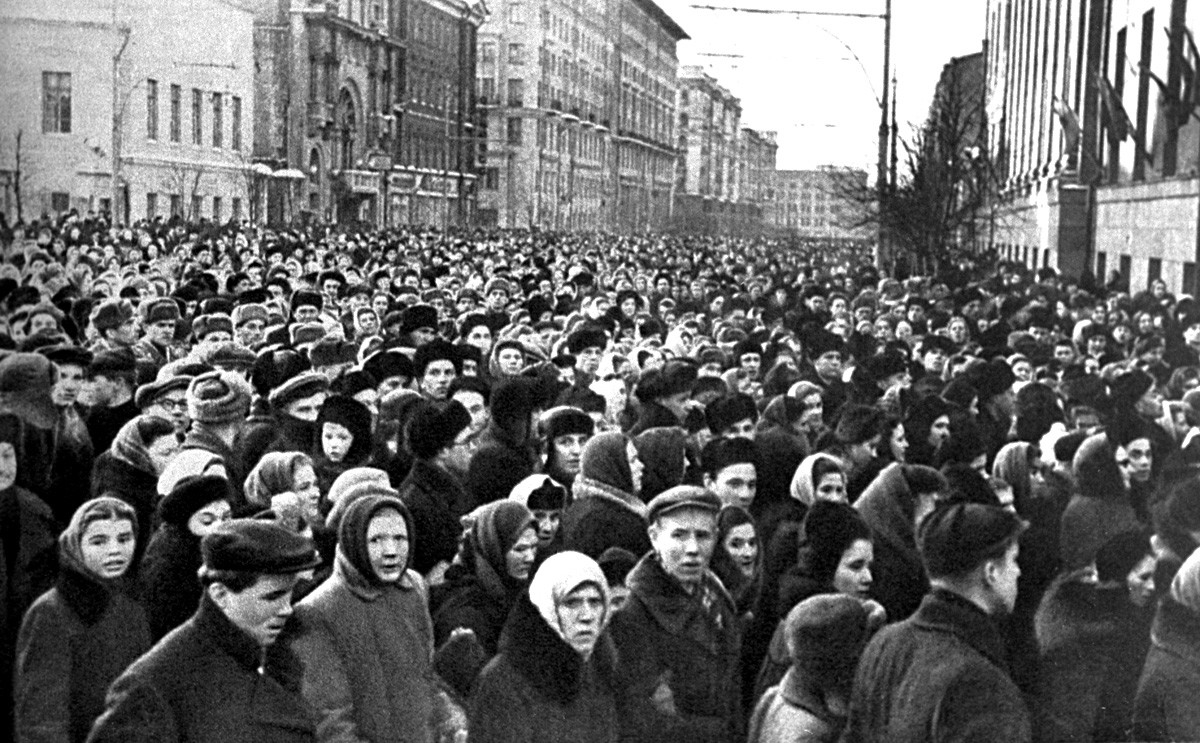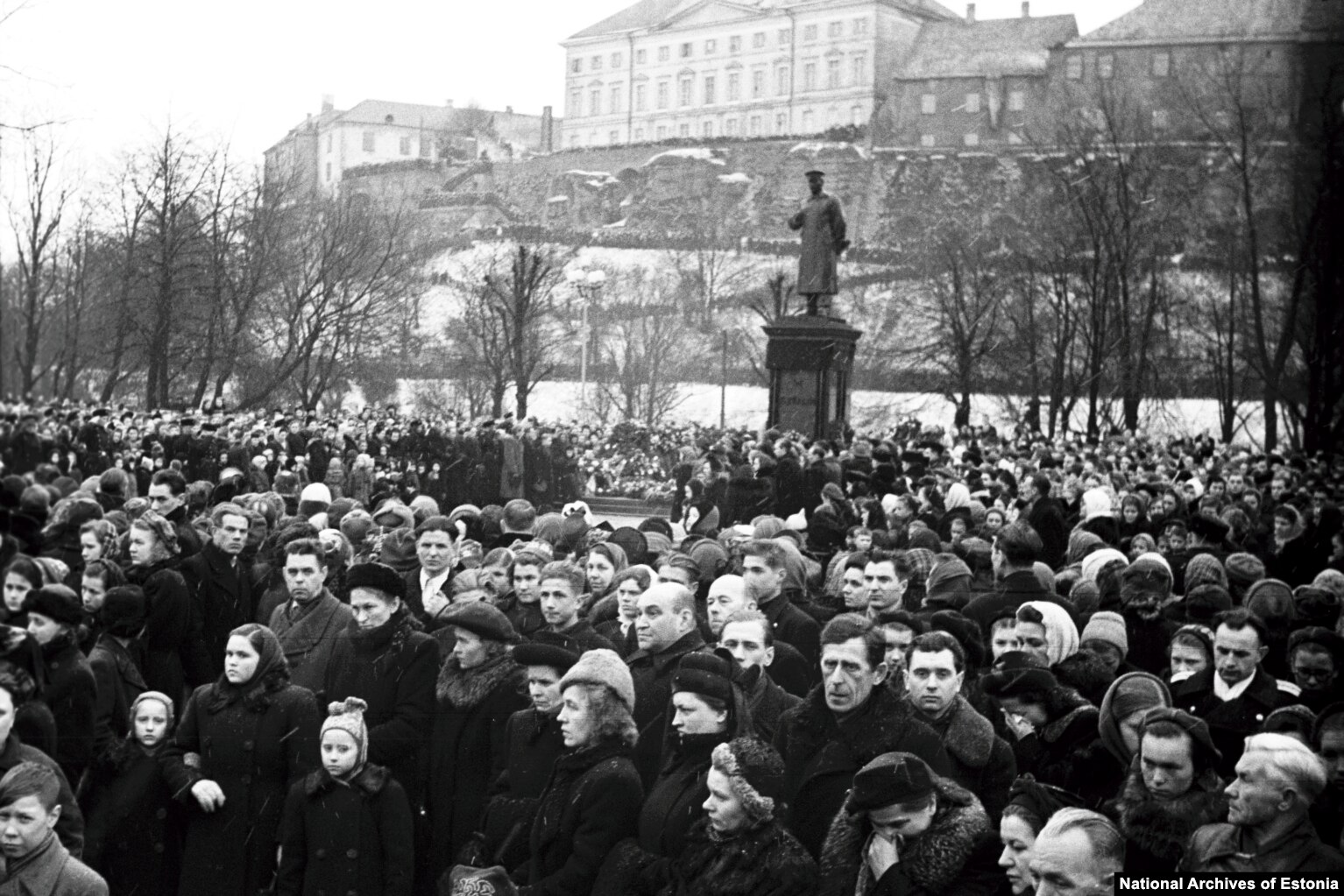Stalin: Death and Psychosis
Joseph Stalin died on 5 March 1953. Millions of Soviet citizens were deeply saddened by the loss of their great leader and father of the nation, writes historian David Vseviov.
On the morning of 6 March 1953, the Soviet people learned that Joseph Stalin (Dzhugashvili), Chairman of the Council of Ministers and General Secretary of the Communist Party of the Soviet Union had passed away. He who had shaped the face of the Soviet Union and ruled the country with an iron fist for almost 30 years. Dead was the man who had been compared to eternal sun; he was the infallible leader, father of all peoples for some and a tyrant with blood on his hands for others.

This article describes the former, i.e., the people who reacted hysterically to Stalin’s death, the death of their idol; this for them was the same as the collapse of their world. These were people for whom the passing of Stalin equalled a death blow.
Although there are no specific data, a significant increase in heart and nervous system diseases was claimed to have occurred in the whole country. According to the contemporaries, a large part of the population was overcome by shock. This is in some way understandable and has a relatively simple explanation.
With all media channels trumpeting that Stalin was a genius and never wrong, millions saw him as their sole defender and hope. Many of them had grown up during the Stalin era and could not even imagine that someone else would be their leader. And now he was gone ...
A schoolchild wrote in the diary: „Stalin is no more. Cannot do anything, everything falls apart. Crying all the time“. An adult person wrote the following: „This is the end. The Americans are going to conquer us“. The texts of official publications also emphasised that Stalin’s death was a fatal event, thus increasing such feelings in the minds of ordinary people.
Sergey Mikhalkov, author of the lyrics of the Soviet and Russian State Anthems wrote immediately after Stalin’s death that he was heartbroken, for he could not lend him „his every heartbeat and breath“. The reports of the Soviet militia of the period often recorded the cause of death of some people as „having been completely devastated by the death of comrade Stalin“. Or in more extreme cases: they had committed suicide.
The possibility of Stalin passing away was not entirely unexpected. Although the 74-year-old despot had collapsed days earlier, it was only on 4 March that official information was released about his illness. Up until then Stalin’s „faithful“ disciples had been assessing the situation and planning future power relationships. The official announcement about Stalin’s state of health read out in the tragic voice of Levitan did not leave much hope – the demise of the Leader was a matter of the nearest future.
The announcement of Stalin’s passing that appeared in the Pravda two days later summarised the official reaction – the whole nation was in mourning. And this is exactly what happened: hundreds of thousands shed tears and cried out in pain, „What is to happen to us?“ and „Who is going to look after us now?“ etc.
Summarising the reactions of people following the end of the Stalin era, the poet Joseph Brodsky wrote, „People grew up, got married, got divorced, gave birth, became old and died – and all this happened under the portrait of Stalin. There was a lot to cry about. Everyone was asking, how to live on without Stalin. And nobody knew the answer.“
Brodsky described the prevailing mood of those days as follows, „I was thirteen. I was in school; they herded us all into the assembly hall, ordered us to get down on our knees, and the Secretary of the Party Organization ... wrung her hands and screamed to us from the stage, „Weep children, weep! Stalin has died!“ And she herself was first to begin wailing in lamentation.“
Grief, expressed in such manner is not always sincere. This even applies to state authorities. In light of another purge that Stalin was organizing („the killer doctors’ plot“), they were well aware that the sword was already hanging over their heads.
The world-famous violinist David Oistrakh recalled how he and other musicians had been invited to play in the Pillar Hall on the occasion. A table was laid for them backstage so that they could take a rest and eat.

At one point Khrushchev looked in. With a smug look on his face, he said in passing, „Cheer up, guys!“. Had someone uttered anything even close to that on the street, it would have ended badly. „Beating up“ would have been definitely an option. Many would have considered such attitude as sacrilege. This is also confirmed by a considerable number of complaints to the security forces about people who had expressed satisfaction or joy about Stalin’s death.
All across the country preparations were underway to organise ceremonies in honour of the deceased leader: the funeral service in Moscow, mourning meetings in the republics and oblasts etc. Extra spotlights mounted on trucks lined the streets and squares of Moscow leading to the Pillar Hall of the House of Unions, where Stalin was lying in state. People filled the streets during the nights, waiting for the doors to be opened so that they could pay their respects to the departed leader.
The funeral ceremony was to take place on the morning of Monday, 9 March. By that time about two million people had paid their respects to Stalin. On the second day of mourning only official delegations were allowed entry to the Pillar Hall.
Huge crowds had gathered in central Moscow by Sunday night, trying to be in time to pay their last respects to their leader. The authorities left the outer parts of the city open, but closed the centre with trucks, so that those inside were trapped and could not leave. In addition, there was no information whatsoever about possible routes that could be used by the people.
The Memorial Society, now closed down by the Russian authorities, has been gathering memoirs of people who thanks to a lucky chance escaped death on that day. These horrible stories make one’s blood curdle. These are stories about the fate of actual people, but they go to show how little regard the Soviet state had for its citizens.
Not a single person from the state or city authorities took one step to avoid the catastrophe and tell the military and the militia to change tactics and stop more crowds from arriving. After the tragedy there was no investigation, and not even the approximate numbers of the dead and injured were established. Various sources have later estimated that the number of people trampled to death could have ranged from a hundred to several thousands.
According to eyewitnesses the bodies of the people who were crushed dead were loaded on trucks and taken out of the city to be buried in a mass grave. Among the casualties were some who recovered and pleaded for help. They could have been saved. But the ambulances could not come to their rescue, for the streets in the city centre were closed off. Nobody was interested in the wounded; they were left to die.
A similar tragedy happened in the Khodynka Field in Moscow on 18 May 1896, during the coronation festivities of the last Emperor of Russia. A crowd rush occurred in the course of distributing coronation gifts. 1,389 persons perished and 1,301 were injured. When these events were dealt with during the Soviet period the tsar was accused of being inhuman, for he continued the festivities and did not announce a period of mourning in the country.
But at the same time, the tragedy was not brushed under the carpet. The tsar family visited the injured in the hospital and the families of the victims were granted financial support. The Soviet authorities, however, covered up their own „Khodynka“ altogether.

The literary scholar Liliana Lungina, who witnessed the events wrote later, „In addition to the millions whom Stalin killed in his lifetime, he took many along in his death as well.“
The documentary „The Great Farewell“ demonstrated to the entire world how „true“ Soviet people paid tribute to comrade Stalin. The film showed how people were reading the news about Stalin’s death in the papers, in Soviet cities and villages, and abroad. How the Soviet and foreign cities were flying flags of mourning. How Soviet and foreign heads of state were standing in the guard of honour. Obviously, the film and the articles in the newspapers were completely silent about the relief and joy thousands felt about the passing of the bloody dictator.
David Vseviov (born in 1949) specialises in art and cultural history. He is considered to be one of the most prominent specialists in Russian history in Estonia. Vseviov has been teaching at the Estonian Academy of Arts since 1986. Before receiving the title of the professor emeritus in 2020, he was a longtime history professor at the same university. Vseviov has published numerous books and has been hosting the radio show "Mystical Russia" since 1999. He has received various civil awards and state decorations.